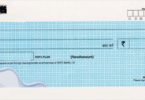Micro Economics question and answer:
The slope of a budget line throughout its length is
(a) The satisfaction level of both the commodities
(b) The income level of the consumer
(c) The price ratio of both the commodities under consideration
(d) Price level of a country
Microeconomics also called:
(a) Income theory
(b) Investment theory
(c) Price theory
(d) Expenditure theory
The slope of a budget line is
(a) The satisfaction level of both the commodities
(b) The income level of the consumer
(c) The price ratio of both the commodities under consideration
(d) Price level of a country
Which of the following is a fundamental concept in microeconomics?
(a) Gross Domestic Product (GDP).
(b) Price elasticity of demand.
(c) Fiscal policy.
Ordinal utility analysis is otherwise known as
(a) Gossens second law
(b) Cardinality approach
(c) Indifference curve analysis
(d) Rationality approach
When an individual’s income falls (everything remains the same), his demand for an inferior good?
(a) Rises
(b) Falls
(c) Remains the same
(d) We cannot say without additional information.
Related: Excel test practice
Marginal utility is
(a) Always zero
(b) Increases at a diminishing rate
(c) The utility derived from last unit
(d) All the above
The terms “Micro Economics” and “Macro Economics” were coined by
(a) Alfred Marshall
(b) Ragner Nurkse
(c) Ragner Frisch
(d) J.M. Keynes
The substitution effect for a commodity is
(a) Is always positive
(b) Depends upon the nature of the commodity
(c) Depends upon price effect
(d) Sometimes negative and sometimes positive
Which of the following statements is TRUE with regard to total utility?
(a) Total utility is the utility derived from the last unit
(b) Total utility increases in a diminishing range
(c) As consumption increases, the total utility goes on diminishing.
(d) At saturation point, the total utility is negative
The income effect for a commodity is
(a) Is always positive
(b) Is always negative
(c) Depends upon price effect
(d) Determines the nature of the commodity
Related: Questions about Unemployment
When an individual’s income rises (everything remains the same), his demand for a normal good?
(a) Rises
(b) Falls
(c) Remains the same
(d) negative
When the price of a product falls, more of it is purchased because of
(a) The substitution effect
(b) The income effect
(c) Neither substitution effect nor income effect
(d) Both the substitution and income effects
Total utility curve
(a) Always rises
(b) First falls then rises
(c) Always falls
(d) First rises and then falls after reaching its maximum
According to Hicks, the substitution effect is
(a) The movement to a higher indifference curve
(b) The movement to a lower indifference curve
(c) The movement along an indifference curve
(d) The movement to a decreased consumption
Related: quiz on inflation
If the negative income effect is greater than the positive substitution effect, the price effect will be
(a) Zero
(b) Negative
(c) Positive
(d) Positive and greater than one
An indifference curve represents
(a) Four commodities
(b) Less than two commodities
(c) Only two commodities
(d) Only one commodity
At the point of tangency, the slope of the indifference curve is
(a) Differ from point to point
(b) Is equal on the other side of the midpoint
(c) Is the same
(d) Is increasing
When total utility is increasing at a decreasing rate, marginal utility is
(a) Constant
(b) Negative
(c) Increasing
(d) Decreasing
Related: Economic development questions / answers
If the negative income effect is less than the positive substitution effect, the product will be
(a) A normal good
(b) An inferior good
(c) A giffen good
(d) A complementary good
In the fundamental theorem of consumption and to prove the law of demand, Samualson uses
(a) Compensating variation in income
(b) The cost difference
(c) The over-compensation effect
(d) Substituting variation in price
The price effect is
(a) Income effect – substitution effect
(b) Substitution effect – income effect
(c) Income effect + substitution effect
(d) Income effect + substitution effect- negative effects
A consumer reaches equilibrium when
(a) Marginal utility is equal to price
(b) Marginal utility greater than price
(c) Marginal utility less than price
(d) Total utility is equal to price
Related: Principles of Macroeconomics Quiz
The total utility is
(a) The sum total of marginal utilities
(b) Entire utility derived from whole consumption
(c) Increases at a diminishing rate
(d) All the above
What does the law of supply state in microeconomics?
(a) As the price of a product increases, the quantity supplied decreases.
(b) As the price of a product increases, the quantity supplied increases.
(c) There is no relationship between the price of a product and the quantity supplied.
What are consumption goods?
(a) Goods used for consumption in the production process
(b) Goods such as tools, machinery, etc which are used to create final consumption goods
(c) Goods and services that are consumed fully when purchased by the consumers
At saturation point, MU of a commodity is
(a) Positive
(b) Negative
(c) Zero
(d) Increasing
Intermediate goods are not included in calculating the final output because:
(a) they do not have value
(b) they have unknown value
(c) their value is included in final goods so they are not added to avoid the problem of double counting
Related: global trade quiz
Strong ordering means
(a) Absence of indifference
(b) Presence of indifference
(c) No difference between different combinations
What does the term “opportunity cost” refer to in microeconomics?
(a) The monetary cost of a good or service.
(b) The benefits of consuming a particular good or service.
(c) The value of the next best alternative forgone when making a choice.
What are capital goods?
(a) Goods used for consumption in the production process
(b) Goods such as tools, machinery, etc which are used to create final consumer goods
(c) Goods and services that are consumed fully when purchased by the consumers






